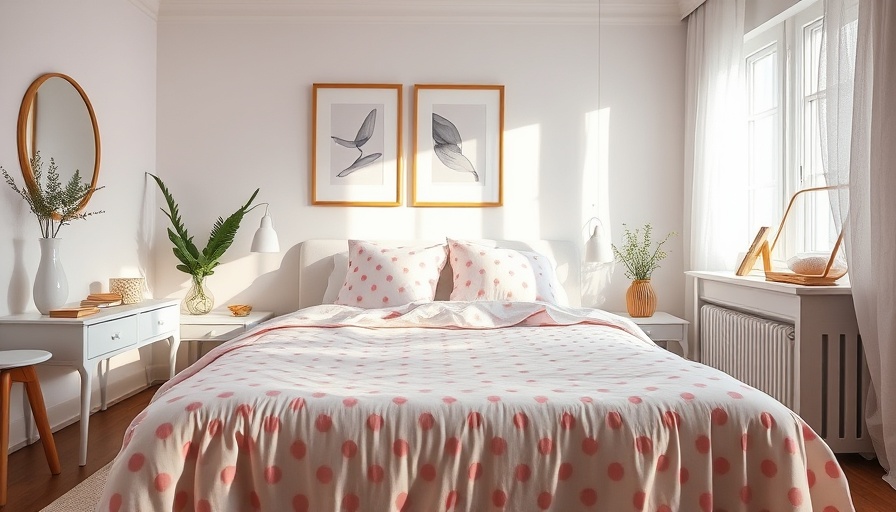
Bringing Back Polka Dots: A Trend Revisited
As the winds of change sweep through the world of interior design, one trend is catching fire among both homeowners and decorators alike: polka dots. This playful print is rising from the ashes of nostalgia, with designers turning to its versatility as a means of injecting fun and vibrancy into spaces. While the pattern conjures memories of the 90s, it has evolved to embrace modern aesthetics with a twist. Whether adorned on rugs, wallpaper, or accent pieces, polka dots are reclaiming their place in today’s chic interiors.
The Allure of the Timeless Pattern
Interior designer Sasha Bikoff emphasizes the unique quality of polka dots, saying, "They are a classic, but at the same time, have a nostalgic and playful quality to them." This is echoed by other design experts who note that polka dots are versatile, allowing for endless styles and combinations. Trendy yet familiar, polka dots resonate with homeowners looking to create inviting spaces that feel both modern and reminiscent.
How to Style Polka Dots in Your Home
Integrating polka dots into your decor doesn’t have to be daunting. Here are some techniques to master this trend:
- Choose Sizing Wisely: Depending on your aesthetic, select either larger polka dots for dramatic impact or smaller ones for subtlety.
- Pair Creatively: Consider mixing polka dots with other patterns such as florals, as they complement and contrast beautifully.
- Color Choices Matter: Experiment with unexpected colors and textures; muted tones or rich jewel shades can elevate the look significantly.
- Space Utilization: Select small spaces like a bathroom to use bold polka dot designs, creating a punchy and eye-catching statement.
The Emotional Connection to Patterns
The resurgence of polka dots may offer more than just visual appeal; it taps into deeper emotional connections. Patterns often evoke memories, and for many, polka dots may remind them of childhood, family gatherings, or even cultural events. In capturing such memories, decor can feel more personal and meaningful.
Unexpected Uses for Polka Dots
Polka dots aren’t confined to just traditional home settings; the trend has made its way into innovative uses, such as:
- Event Decor: Utilizing polka dots for parties can create a playful atmosphere—think tablecloths, balloons, or even invitations.
- Fashion Statements: Designers like Carolina Herrera have embraced polka dots on runways, blending fashion and home style.
- Accessorizing Spaces: Whether through throw pillows, artwork, or curtains, polka dot accents can harmonize with various styles.
Future of Polka Dots in Design
As the industry continues to evolve, polka dots will likely remain a staple due to their adaptability. Expect to see fresh interpretations in patterns, colors, and materials, allowing them to resonate with new audiences. The iconic print may appear in unexpected contexts, blurring the lines between traditional and contemporary spaces.
Final Thoughts on Decorating with Polka Dots
Adopting polka dots in your home need not be a daunting task. By understanding color theory, the nuances of pattern play, and emotional connections, you can create dynamic and inviting environments that reflect both your personality and style. As you consider revamping your space, let the charm of polka dots lead the way in making your design dreams a colorful reality.
 Add Row
Add Row  Add
Add 




Write A Comment